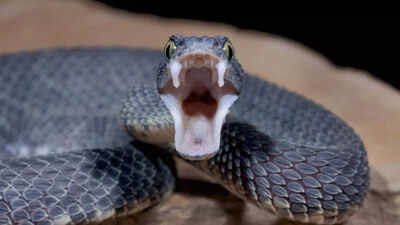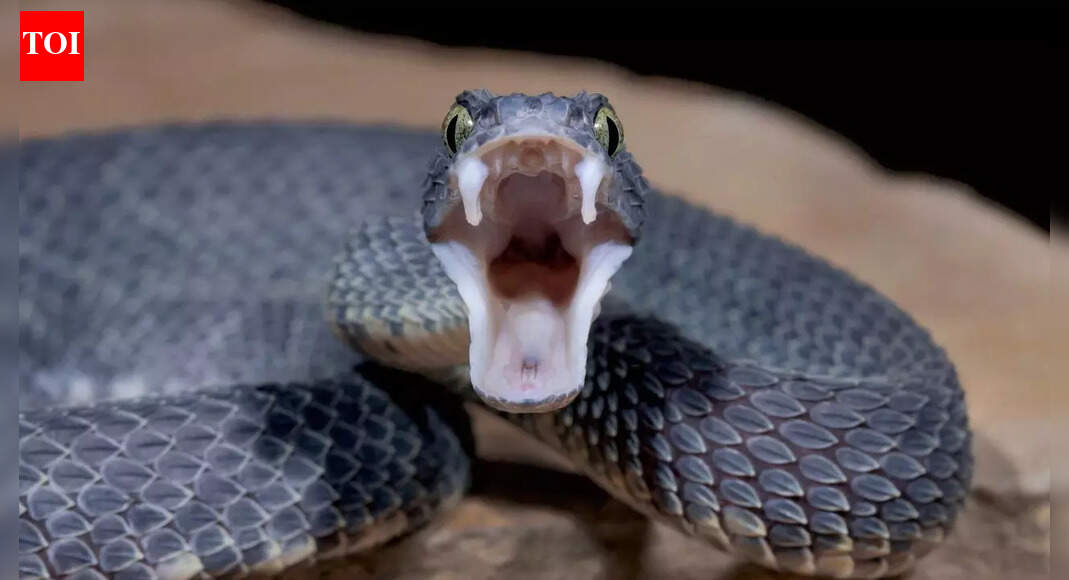 The ability of venomous snakes to strike with remarkable speed has become a subject of growing interest among researchers aiming to understand how animals operate at the limits of physical performance. High speed recordings have revealed that these movements unfold in less than the blink of an eye, combining muscle power, precise jaw control and coordinated body motion to secure prey. The topic sits at the centre of discussions on predator behaviour, ecological balance and vertebrate biomechanics, making it relevant to fields ranging from evolutionary biology to public health. As new analytical tools shed light on these rapid actions, the mechanics behind a snake’s strike are becoming clearer and more scientifically instructive.The research paper published in Journal of Experimental Biology provides a detailed analysis of strike mechanics across multiple species, using controlled trials to measure velocity, acceleration and jaw positioning during feeding attempts.
The ability of venomous snakes to strike with remarkable speed has become a subject of growing interest among researchers aiming to understand how animals operate at the limits of physical performance. High speed recordings have revealed that these movements unfold in less than the blink of an eye, combining muscle power, precise jaw control and coordinated body motion to secure prey. The topic sits at the centre of discussions on predator behaviour, ecological balance and vertebrate biomechanics, making it relevant to fields ranging from evolutionary biology to public health. As new analytical tools shed light on these rapid actions, the mechanics behind a snake’s strike are becoming clearer and more scientifically instructive.The research paper published in Journal of Experimental Biology provides a detailed analysis of strike mechanics across multiple species, using controlled trials to measure velocity, acceleration and jaw positioning during feeding attempts.
What factors determines how fast a snake can strike
The study examined 36 venomous snake species representing Viperidae, Elapidae and Colubridae, using two high speed cameras operating at 1,000 frames per second to document each strike in three dimensions. This approach produced a precise record of how quickly different snakes moved from the start of the strike to the moment of contact with a gel based prey model. One of the most striking results was the variation in peak velocity between families. Vipers generally reached higher top speeds, often producing a sharp, fluid forward motion that allowed them to bridge distance quickly. Elapids, although sometimes slower in peak velocity, frequently launched strikes from shorter distances, creating a more controlled approach that relied on rapid contact rather than long acceleration phases. These differences demonstrated that speed alone does not define strike success, since distance, angle and timing also shaped how efficiently each species reached the target.
How a snake’s body and hunting style shape its attack
Another layer of complexity emerged when the researchers compared ecological traits and feeding strategies with the kinematic data. Many viper species use ambush tactics, remaining motionless until prey approaches close enough to trigger the strike. Mammal eating vipers displayed particularly strong acceleration and often produced higher maximum speeds, possibly reflecting the need to subdue agile prey that can escape rapidly. Jaw morphology also influenced the dynamics of the strike. Larger gape angles, wider heads and differences in fang position created noticeable variation in how the snakes made first contact. Some species engaged the prey with both upper and lower jaws simultaneously, while others relied on a specific jaw corner or a single fang-bearing segment of the mouth. These variations were tied to the distance from which the strike began, suggesting that morphology and behaviour work together to optimise contact and effective envenomation.
The role of fang type in strike style and venom delivery
Fang structure, a key feature of venomous snakes, had a strong influence on the mechanics of the strike. Vipers, which possess long hinged fangs, often produced sweeping lunges that allowed the fangs to unfold into striking position just before contact. This motion created a smooth, high velocity trajectory that delivered venom efficiently. The ability to rotate or adjust fang positioning once the jaws met the prey added further flexibility to their attack. Elapids, on the other hand, have fixed fangs at the front of the mouth, leading to a very different style of attack. They tended to move closer to the prey before launching a bite, relying on rapid jaw closure rather than distance cover. Some species performed repeated quick bites instead of a single decisive strike, reflecting behavioural strategies suited to smaller or more mobile prey. The single colubrid species in the study used rear positioned fangs and produced a broader, sweeping contact motion that sometimes scraped or dragged along the prey surface before venom engagement. These contrasts highlight how evolutionary variation in fang structure shapes the kinematic profile of each family.
How snakes reach prey before it can react
One of the most revealing findings concerned the timescale of each strike. Many of the recorded attacks reached the prey in roughly 100 milliseconds or even less. This duration is similar to or shorter than the typical mammalian startle response, meaning that prey often have little chance to react once the strike is initiated. The extremely short reaction window underscores why strike precision and acceleration are crucial aspects of predatory success. The study also observed that acceleration often peaked early in the motion, suggesting that snakes rely on a rapid burst of muscle power at the very start of the strike. This pattern aligns with the need to overcome initial inertia quickly in order to reach the target before escape responses can occur. When combined with variation in gape angle, body posture and contact mode, these timing elements contribute to a highly efficient predatory system that balances speed, accuracy and venom delivery in a single movement sequence.
How high speed strikes reveal the limits of biology
Research on snake strike biomechanics offers insight beyond herpetology, since the methods and findings contribute to wider investigations of rapid animal motion. Three dimensional tracking of high speed attacks helps clarify how muscle groups, skeletal structures and neural control systems coordinate to produce fast and accurate movements. This approach also informs ecological modelling, particularly in understanding predator effectiveness and how prey behaviour evolves in response. In regions where snake bites pose a public health challenge, awareness of the extreme speed of the strike can also guide educational efforts and support improvements in medical response, especially in rural communities where encounters are more common. The study’s measurements enrich our understanding of how small scale biomechanical events can influence large scale ecological outcomes, offering a detailed view of one of nature’s fastest predatory actions.Also Read | Turtles vs. tortoises: Difference in appearance, habitat, features and more
